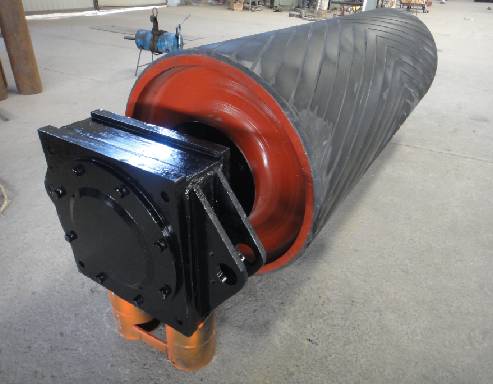 Afrikaans
Afrikaans  Albanian
Albanian  Amharic
Amharic  Arabic
Arabic  Armenian
Armenian  Azerbaijani
Azerbaijani  Basque
Basque  Belarusian
Belarusian  Bengali
Bengali  Bosnian
Bosnian  Bulgarian
Bulgarian  Catalan
Catalan  Cebuano
Cebuano  Corsican
Corsican  Croatian
Croatian  Czech
Czech  Danish
Danish  Dutch
Dutch  English
English  Esperanto
Esperanto  Estonian
Estonian  Finnish
Finnish  French
French  Frisian
Frisian  Galician
Galician  Georgian
Georgian  German
German  Greek
Greek  Gujarati
Gujarati  Haitian Creole
Haitian Creole  hausa
hausa  hawaiian
hawaiian  Hebrew
Hebrew  Hindi
Hindi  Miao
Miao  Hungarian
Hungarian  Icelandic
Icelandic  igbo
igbo  Indonesian
Indonesian  irish
irish  Italian
Italian  Japanese
Japanese  Javanese
Javanese  Kannada
Kannada  kazakh
kazakh  Khmer
Khmer  Rwandese
Rwandese  Korean
Korean  Kurdish
Kurdish  Kyrgyz
Kyrgyz  Lao
Lao  Latin
Latin  Latvian
Latvian  Lithuanian
Lithuanian  Luxembourgish
Luxembourgish  Macedonian
Macedonian  Malgashi
Malgashi  Malay
Malay  Malayalam
Malayalam  Maltese
Maltese  Maori
Maori  Marathi
Marathi  Mongolian
Mongolian  Myanmar
Myanmar  Nepali
Nepali  Norwegian
Norwegian  Norwegian
Norwegian  Occitan
Occitan  Pashto
Pashto  Persian
Persian  Polish
Polish  Portuguese
Portuguese  Punjabi
Punjabi  Romanian
Romanian  Russian
Russian  Samoan
Samoan  Scottish Gaelic
Scottish Gaelic  Serbian
Serbian  Sesotho
Sesotho  Shona
Shona  Sindhi
Sindhi  Sinhala
Sinhala  Slovak
Slovak  Slovenian
Slovenian  Somali
Somali  Spanish
Spanish  Sundanese
Sundanese  Swahili
Swahili  Swedish
Swedish  Tagalog
Tagalog  Tajik
Tajik  Tamil
Tamil  Tatar
Tatar  Telugu
Telugu  Thai
Thai  Turkish
Turkish  Turkmen
Turkmen  Ukrainian
Ukrainian  Urdu
Urdu  Uighur
Uighur  Uzbek
Uzbek  Vietnamese
Vietnamese  Welsh
Welsh  Bantu
Bantu  Yiddish
Yiddish  Yoruba
Yoruba  Zulu
Zulu roller conveyor parts
Understanding Roller Conveyor Parts A Comprehensive Overview
Roller conveyors are essential components of modern material handling systems, widely used in warehouses, manufacturing facilities, and distribution centers. These systems are designed to efficiently transport goods, facilitating a smoother flow of operations. Central to the effectiveness of roller conveyors are their various parts, each playing a crucial role in their functionality. In this article, we will explore the key components of roller conveyors and their significance in enhancing operational efficiency.
1. Rollers
At the heart of any roller conveyor system are the rollers themselves. These cylindrical components are designed to support and move products along the conveyor line. Rollers can be made from a variety of materials, including plastic, steel, and aluminum. The choice of material often depends on the application and the weight of the items being transported. For heavier loads, steel rollers are preferred for their durability, while plastic rollers may be suitable for lighter items.
Rollers can also vary in design—some are rigid, while others are flexible, allowing them to adapt to curves and inclines in the conveyor system. Additionally, the spacing between rollers is crucial; proper spacing helps maintain product stability and prevents items from falling through.
2. Frames
The frame serves as the backbone of the roller conveyor, providing structural support and stability. Typically made from steel or aluminum, the frame's design determines the conveyor's overall strength and load capacity. A well-designed frame ensures that the conveyor can withstand the stresses of continuous operation and heavy loads.
Frames can be configured in various ways, such as straight, curved, or inclined, depending on the layout of the facility and the specific material handling requirements. This adaptability allows businesses to customize their conveyor systems to meet their unique needs.
3. Drive Mechanism
The drive mechanism is a critical component that powers the conveyor. It typically consists of a motor, belts, and other transmission elements that work together to move the rollers. Depending on the design, roller conveyors might be powered by a single motor that drives multiple rollers through belts, or each roller could have its own independent drive.
roller conveyor parts

The choice of the drive mechanism affects several factors, including speed, efficiency, and noise levels. Businesses must carefully consider their operational requirements when selecting a drive system to ensure optimal performance.
4. Bearings
Bearings are essential for smooth operation and minimize friction between the rollers and their support structures. High-quality bearings can significantly extend the lifespan of rollers and reduce maintenance costs. Regular inspections and replacements of bearings are vital to maintain operational efficiency and prevent unexpected downtime.
5. End Stops and Control Devices
End stops are safety features that prevent items from rolling off the end of the conveyor. They are essential in ensuring that products remain in place during loading and unloading processes. Additionally, control devices, such as sensors and switches, are used to regulate the operation of the conveyor. These components can help detect jams, control the speed of the conveyor, and provide alerts for maintenance needs.
6. Accessories
Various accessories can enhance the functionality of roller conveyors. These include side guards, which prevent items from falling off; dividers, which help organize products; and supports or stands that ensure the conveyor remains stable at different heights. Investing in these accessories can significantly improve the efficiency of material handling processes.
Conclusion
Roller conveyors are an integral part of modern logistics and manufacturing operations, making it vital to understand their components. Each part, from rollers and frames to bearings and drive mechanisms, contributes to the efficacy and reliability of the system. By investing in high-quality components and regular maintenance, businesses can ensure that their roller conveyor systems operate at peak performance, ultimately contributing to improved productivity and efficiency. As technology continues to evolve, the development of advanced roller conveyor parts will further enhance material handling capabilities, paving the way for smarter and more efficient operations in various industries.
-
Revolutionizing Conveyor Reliability with Advanced Rubber Lagging PulleysNewsJul.22,2025
-
Powering Precision and Durability with Expert Manufacturers of Conveyor ComponentsNewsJul.22,2025
-
Optimizing Conveyor Systems with Advanced Conveyor AccessoriesNewsJul.22,2025
-
Maximize Conveyor Efficiency with Quality Conveyor Idler PulleysNewsJul.22,2025
-
Future-Proof Your Conveyor System with High-Performance Polyurethane RollerNewsJul.22,2025
-
Driving Efficiency Forward with Quality Idlers and RollersNewsJul.22,2025





























